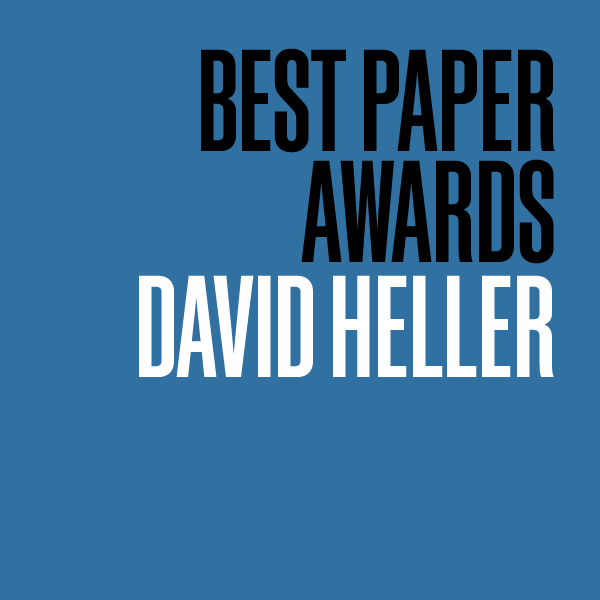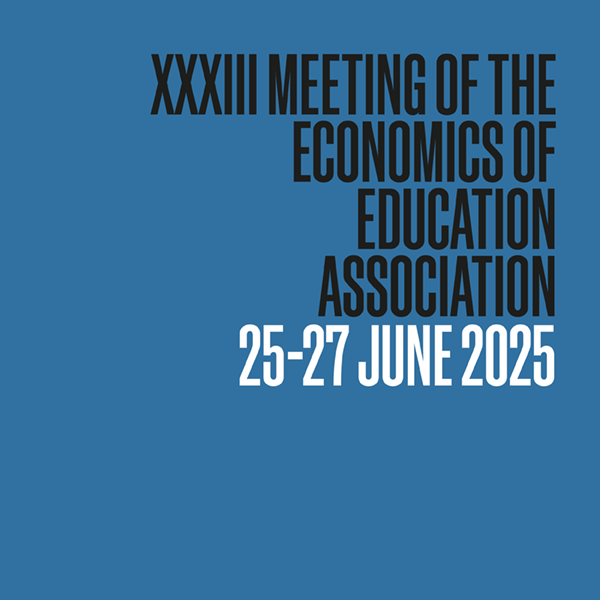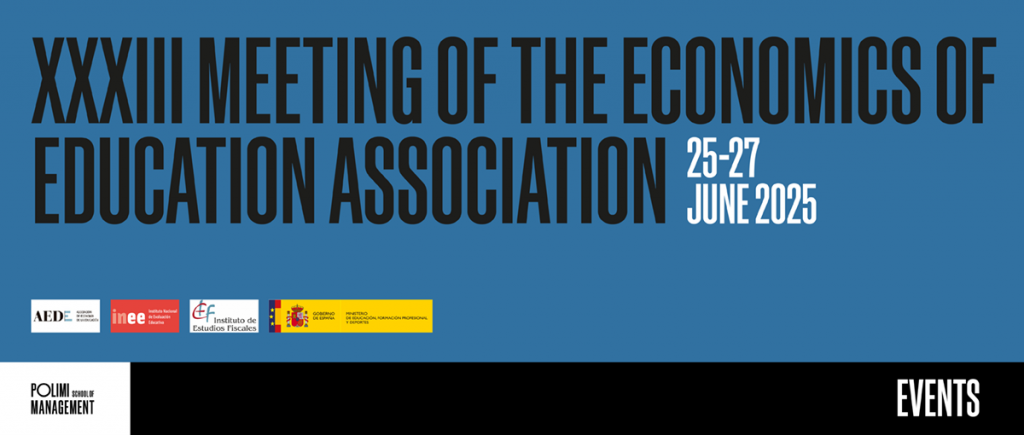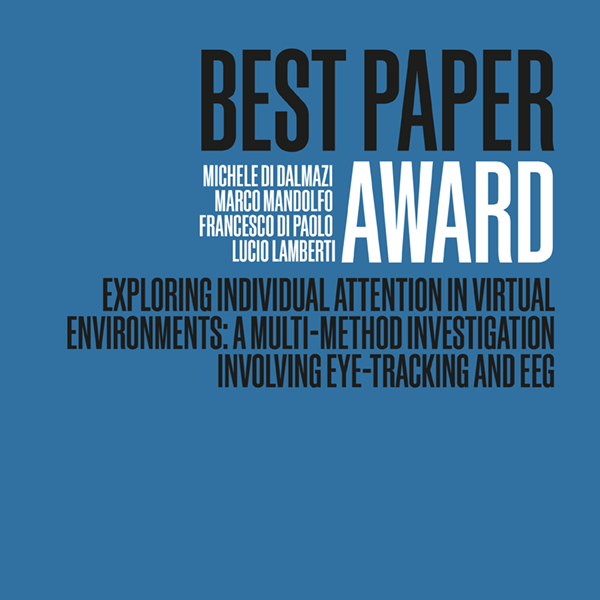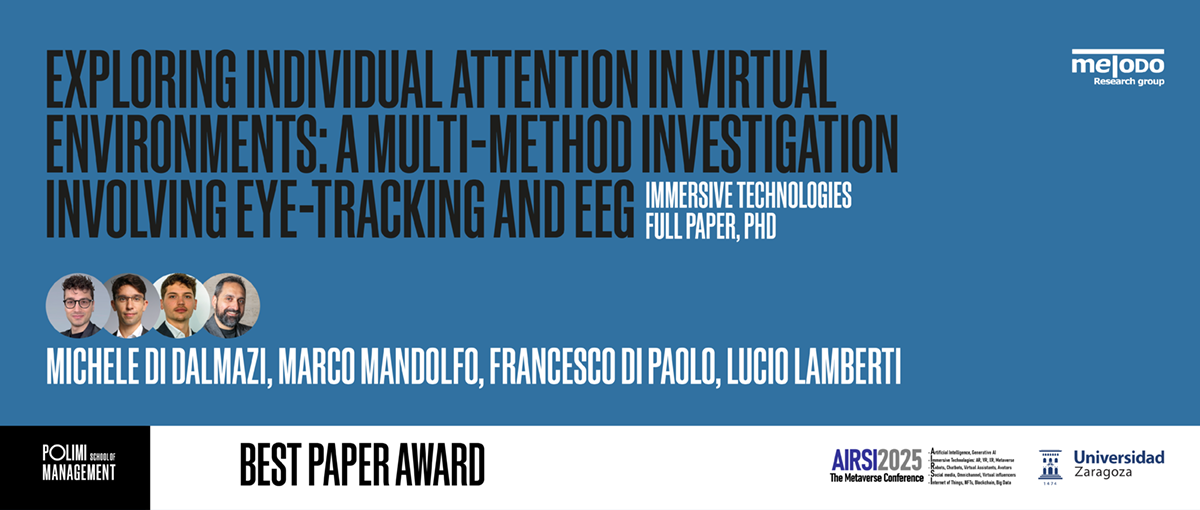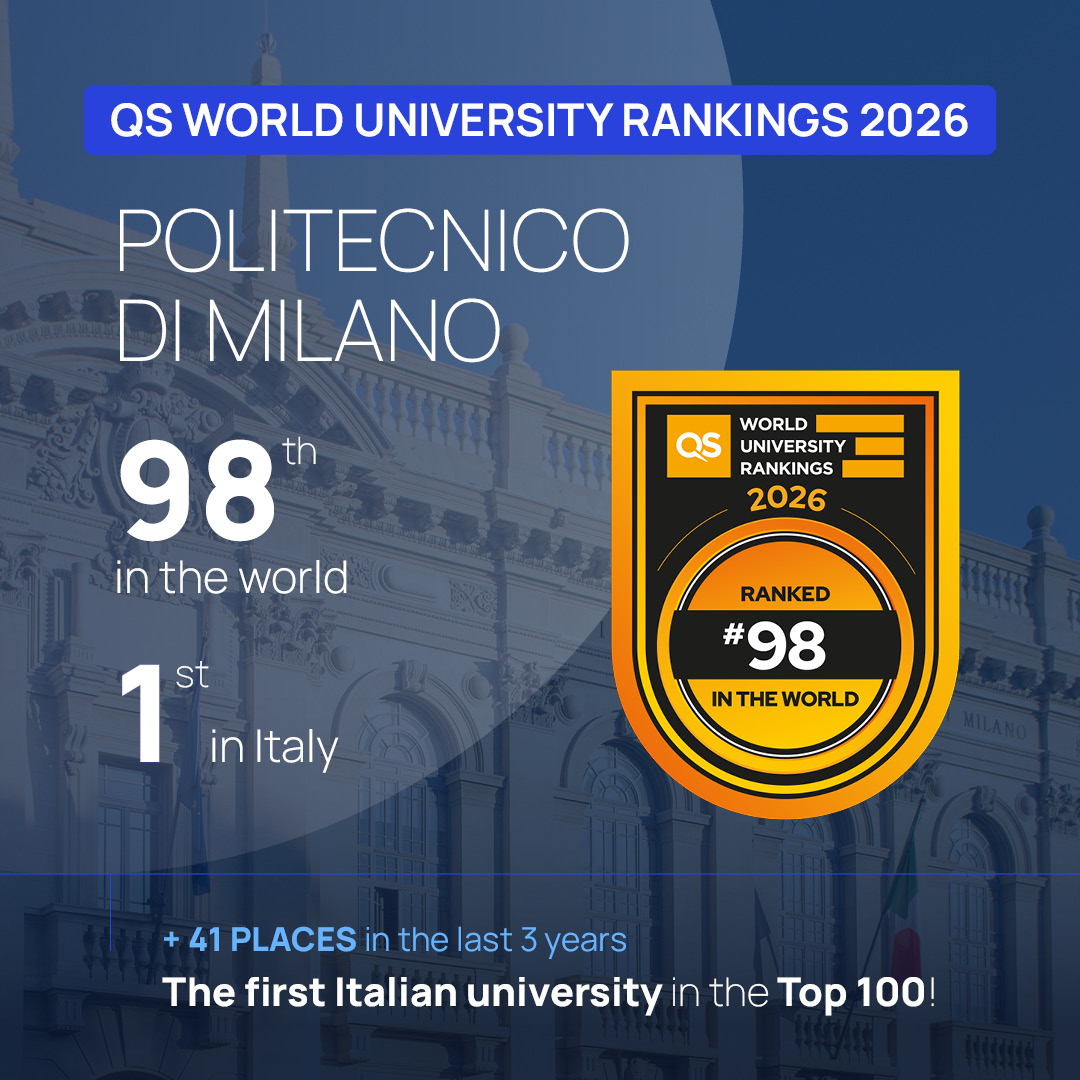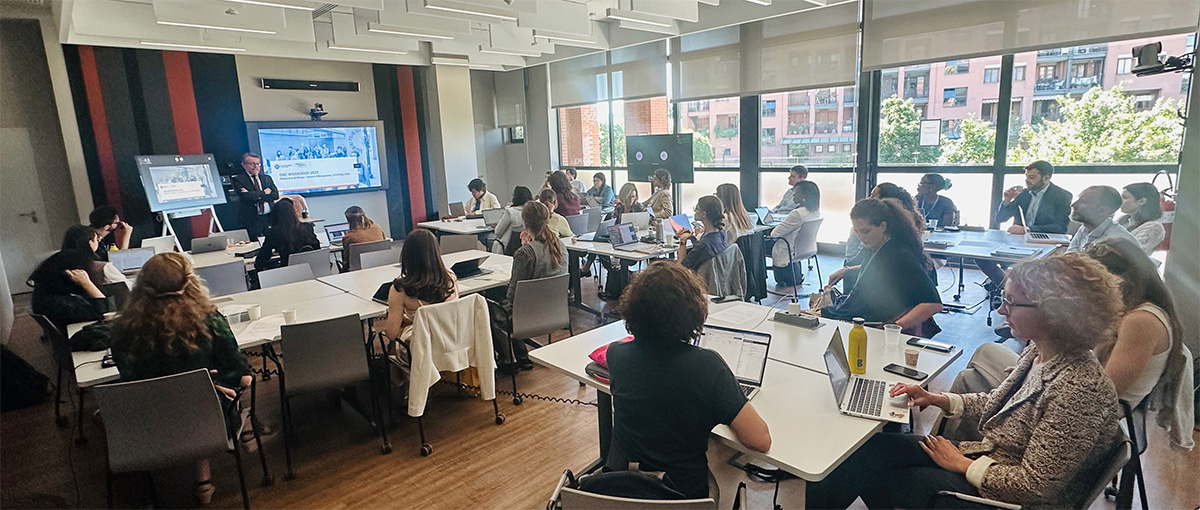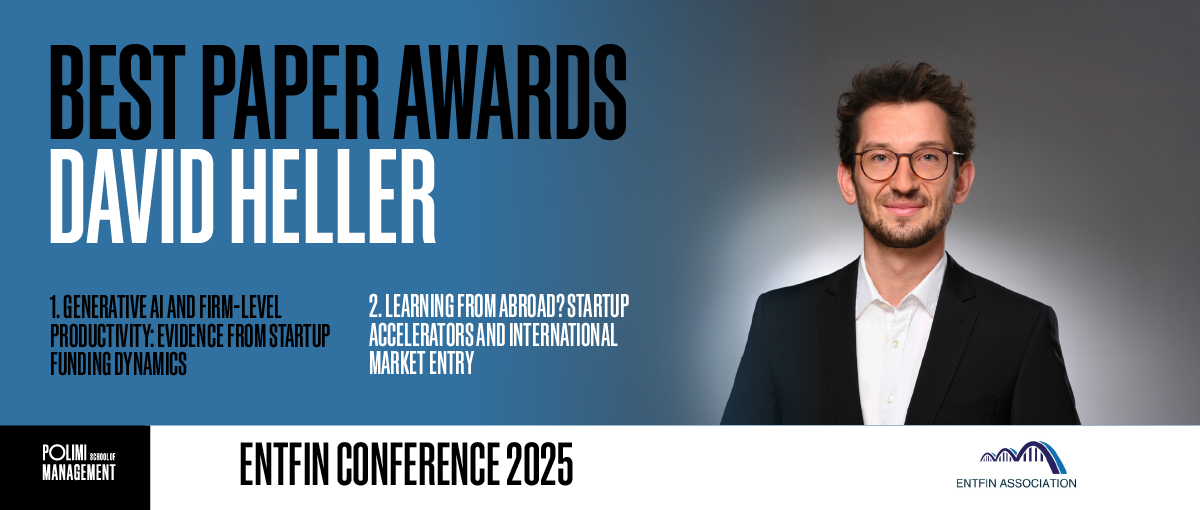
David Heller, researcher at the POLIMI School of Management of the Politecnico di Milano, was awarded the “Best Paper Award” and the “European Investment Fund Best Paper Award on Policy Impact” at the ENTFIN Conference 2025 for two of his pioneering studies on the role of Generative AI in business productivity and the impact of public policies on startup internationalization.
At the 9th Annual Meeting of the Entrepreneurial Finance Association (ENTFIN), held from July 2 to 4, 2025, at Erasmus University Rotterdam, David Heller, researcher at the POLIMI School of Management of the Politecnico di Milano, was awarded the Best Paper Award and the European Investment Fund Best Paper Award on Policy Impact.
The ENTFIN conference is a prestigious international event that brings together scholars interested in entrepreneurial finance from different fields in management, finance, and economics. The aim of the ENTFIN Association is to provide a platform for developing cooperation between academics and practitioners interested in the field of entrepreneurial finance and its applications, in particular, to stimulate high quality research between entrepreneurial finance scholars.
During the 2025 edition, David Heller received two prestigious recognitions for his studies on the implications of Generative Artificial Intelligence (GenAI) on firm-level productivity and the effects of government-funded accelerator programs on startups’ internationalization efforts.
The “Best Paper Award” was granted for Heller’s contribution on “Generative AI and Firm-level Productivity: Evidence from Startup Funding Dynamics”, co-authored with Dominik Asam (full article accessible here). This paper provides first large-scale evidence on the productivity effects of Generative AI in organizations. To study this, it exploits the release of GitHub Copilot in 2021 as a quasi-natural experiment and shows that software developing startups obtained initial external funding significantly faster (+19%) and with significantly fewer employed software developers (-20%). Yet, to elicit these results startups must be led by highly experienced founders, demonstrating that GenAI can have significant productivity gains, but it requires complementary human capital to appropriate these returns.
The European Investment Fund Best Paper Award on Policy Impact was awarded to Heller for the study “Learning from Abroad? Startup Accelerators and International Market Entry” (co-authored with Daehyun Kim and Dietmar Harhoff). The study examines internationalization efforts of startups, a key strategy for many entrepreneurial ventures today, by leveraging a unique dataset that combines proprietary application data from the German Accelerator (GA) – a government-financed program designed to support startups’ international market entry – with detailed startup-level, founder, and investment information. The analysis shows that participating startups significantly raised funding and hired more employees in the GA’s target countries. However, these effects are muted for startups that took part in online programs that were introduced in response to the COVID-19 pandemic, and the results are strongest among startups whose founders had limited international experience prior to participating. This way, the study advances the understanding of the potential and limitations of startup accelerators in supporting international market entry.
The awards received confirm the scientific value and practical relevance of the research conducted, and reaffirm the contribution of the POLIMI School of Management of the Politecnico di Milano to advancing knowledge in entrepreneurial finance, innovation policy, and the transformative potential of emerging technologies.
